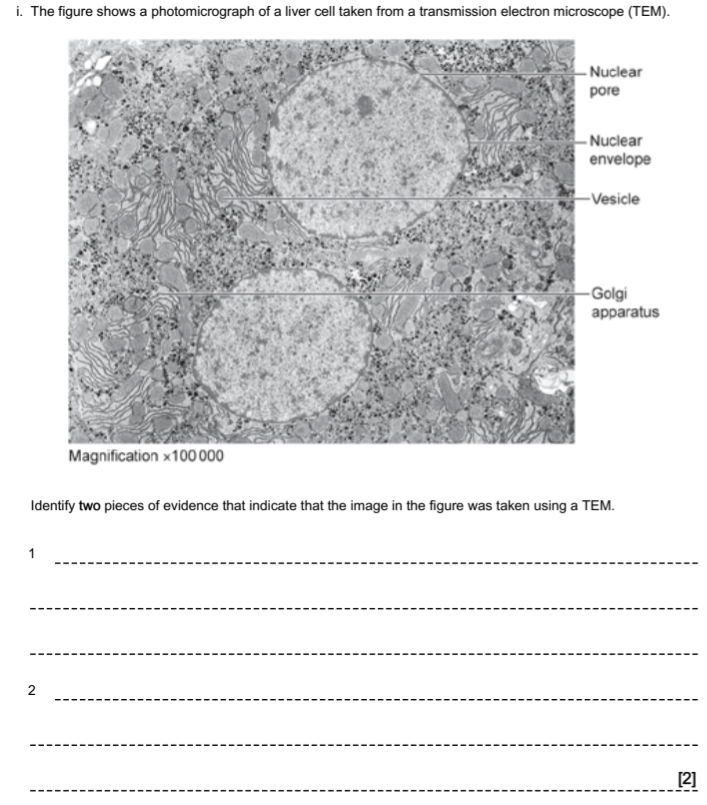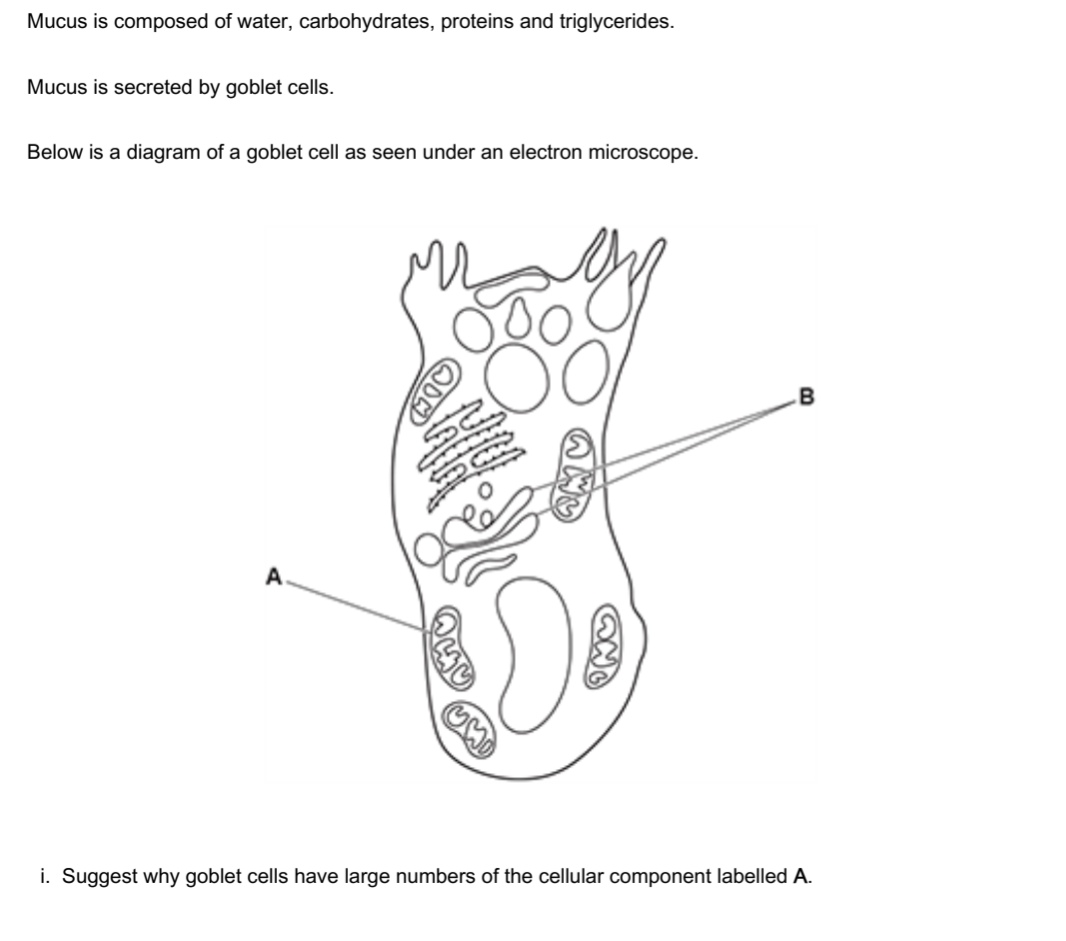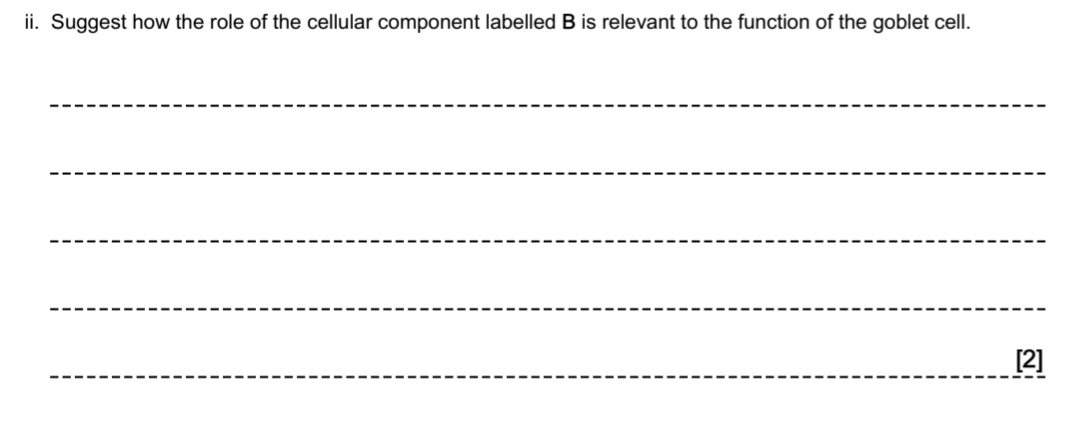Mastering OCR A Level Biology Section 2.1.1: Cell Structure and Organelles (g-h) - Common Questions & Mark Scheme Insights
After extensive analysis of OCR past papers for specification section 2.1.1 (Cell Structure - g-h), I've identified the question patterns that consistently challenge students. Understanding how mark schemes assess organelle functions, protein synthesis pathways, and cytoskeleton roles is crucial for exam success. Let me guide you through five of the most frequently tested question types with real OCR examples.
Question Type 1: Protein Synthesis and Secretion Pathway
(4 marks)
Why this question type is common: The endomembrane system pathway is fundamental to understanding cell biology. This tests knowledge of organelle cooperation and the chronological sequence of protein processing - a core concept that appears repeatedly.
How to structure your answer (4 marks maximum from 7 possible points):
"Proteins are synthesised/translation occurs, on the ribosomes (of RER)"
"Proteins then pass into, lumen/cisternae (of RER)"
"Proteins can, fold/have carbohydrate added"
"(Proteins) are packaged into, transport vesicles"
"(Transport) vesicles move to Golgi by microtubules"
"Vesicles fuse with cis face of Golgi"
"Proteins are modified in Golgi and packaged into, (secretory) vesicles"
Mark scheme insight: The mark scheme allows "RER for rough endoplasmic reticulum throughout" and "cytoskeleton for 'microtubules'." However, it specifically states "DO NOT ALLOW vesicles moving to SER from RER (then Golgi)" - this is a common misconception. The mark scheme also warns "DO NOT ALLOW proteins packaged as vesicles for 'packaged into vesicles'" - the distinction matters.
Mark point 7 allows "proteins are processed for 'proteins are modified'" as an alternative phrasing.
Examiner's comments reveal critical insight: "Most candidates achieved 1 or 2 marks, but few achieved full marks. Most candidates stated the role of ribosomes in protein synthesis, but few could follow through the exact chronology of the subsequent steps. Many answers focused on the movement of the secretory vesicle and exocytosis of the protein without appreciating the question culminated in the production of a secretory vesicle, not its fate."
Common mistakes:
Confusing translation with transcription
Focusing on exocytosis when the question asks about vesicle production
Incorrectly routing through smooth ER
Saying "proteins packaged as vesicles" instead of "into vesicles"
Question Type 2: Cytoskeleton Functions
Why this question type is common: The cytoskeleton is involved in multiple cellular processes, making it perfect for testing breadth of knowledge. It also links to cell division, transport, and structural support.
How to answer (3 marks maximum from 7 possible points):
"Movement of cells"
"Strengthening/supporting, cells"
"Movement of (named) organelles"
"Holds organelles in place"
"Form (mitotic/meiotic) spindle"
"Movement of, chromatids/chromosomes"
"Cleavage in (some) cells/cytokinesis"
Mark scheme insight: The mark scheme says "Mark as continuous prose" and "IGNORE cilia/flagella." This is important - don't waste time describing cilia unless specifically asked.
Key allowances:
Mark point 1: "ALLOW change in cell shape e.g phagocytosis"
Mark point 2: "ALLOW maintains cell shape" but "IGNORE structure"
Mark point 3: "ALLOW form tracks for motor proteins"
Mark point 4: "ALLOW attachment of (named) organelle(s)"
Mark point 7: "IGNORE cleavage/cytokinesis, in plant cells"
Critical examiner's comment: "Some candidates gave two answers that were the same marking point. For example, vesicles are considered organelles, and therefore 2 marks would not be gained for stating movement of vesicles, and movement of organelles, as this is still MP3."
Common mistake: Treating "movement of vesicles" and "movement of organelles" as separate functions - they're the same mark point.
Question Type 3: Evidence for TEM vs SEM
Why this question type is common: Microscopy is a practical skill assessed throughout A-level. This tests ability to distinguish between different microscope types based on image characteristics.
How to approach it (2 marks maximum from 3 possible points):
Compared to light microscope:
"Nuclear pore/nuclear envelope/vesicle/golgi apparatus, are visible"
"High(er) magnification/mag is x100,000"
Compared to scanning EM: 3. "Image is 2D"
Mark scheme insight: The mark scheme specifically says:
"IGNORE ref to image being black and white"
"IGNORE ref to resolution"
For mark point 1: "IGNORE any other named organelle" (only the ones listed count)
For mark point 3: "ALLOW image is not 3D as with a SEM"
Examiner's comments: "Well answered with most candidates referring to the magnification and the visible organelles as compared to a light microscope. A large proportion of candidates also correctly compared the TEM to a scanning EM with statements about the two-dimensional nature of the figure."
Common mistakes:
Mentioning black and white (ignored - all EMs produce monochrome images)
Naming random organelles as evidence (only specific ones count)
Discussing resolution without mentioning specific structures visible
Question Type 4: Explaining Roles of Organelles in Specialized Cells
Why this question type is common: This tests ability to link organelle structure/quantity to cell function - a key skill in understanding specialized cells. It requires application of knowledge to unfamiliar contexts.
How to answer the mitochondria question (1 mark):
"To provide, lots of/much, energy/ATP"
Mark scheme insight: The mark scheme is very specific:
"DO NOT ALLOW make/produce energy"
"ALLOW cell, needs/uses, lots of, energy/ATP"
This distinction matters - mitochondria don't "make" or "produce" energy (which would violate thermodynamics), they provide/release it through respiration.
How to answer the Golgi apparatus question (2 marks maximum from):
"Golgi apparatus" (identification)
"To, modify/process/package, protein"
"Ref. vesicles/secretion (of mucus)/exocytosis"
Mark scheme insight: The mark scheme allows:
"ALLOW smooth endoplasmic reticulum/SER" for component identification
"ALLOW lipid/triglyceride, synthesis (for smooth ER)" as alternative function
The key is linking the organelle to the goblet cell's function of secreting mucus, which contains proteins, carbohydrates, and lipids.
Examiner's comments: Questions linking organelle numbers to cell function are testing whether students can apply their knowledge rather than just recall facts. High-performing candidates explained why large numbers of mitochondria are needed (for energy-demanding processes like active secretion) and identified the Golgi's role in processing and packaging mucus components.
Common mistakes:
Saying mitochondria "produce" or "make" energy (thermodynamically incorrect)
Identifying the organelle but not explaining its relevance to the cell's function
Generic answers like "for metabolism" without linking to specific cell function
Not recognizing that secretory cells need extensive protein/glycoprotein processing machinery
Question Type 5: Organelle Function Table Completion
Why this question type is common: This efficiently tests knowledge of multiple organelles' properties simultaneously. It's a format that discriminates well across ability levels.
How to approach table questions:
Rough Endoplasmic Reticulum:
Membrane-bound: ✓
Found in both animal and plant: ✓
Lipid production: (empty)
Smooth Endoplasmic Reticulum:
Membrane-bound: ✓
Found in both animal and plant: ✓
Lipid production: ✓
Ribosome:
Membrane-bound: (empty)
Found in both animal and plant: ✓
Lipid production: (empty)
Mitochondrion:
Membrane-bound: ✓
Found in both animal and plant: ✓
Lipid production: (empty)
Mark scheme insight: "One mark per correct row" and "IGNORE crosses" - only ticks matter. If you put crosses in wrong places, they're ignored as long as ticks are correct.
Examiner's comments: "This proved to be a good discriminator particularly at the lower end. Many candidates demonstrated a good understanding of cell ultrastructure achieving 3 or 4 marks. The most common error was thinking that ribosomes are membrane-bound organelles."
Common mistake: Ticking that ribosomes are membrane-bound (they're not - they're made of rRNA and protein).
General Tips for Section 2.1.1 Success
1. Learn the complete protein secretion pathway
Standard pathway for secreted proteins:
Synthesized on ribosomes attached to RER
Enter lumen of RER
Folding and initial glycosylation in RER
Packaged into transport vesicles
Vesicles move along microtubules to Golgi
Fuse with cis face of Golgi
Modified as they pass through Golgi
Packaged into secretory vesicles at trans face
Vesicles move to plasma membrane
Exocytosis releases contents
Mark schemes penalize:
Routing through smooth ER (wrong pathway)
Saying proteins packaged "as" vesicles instead of "into" vesicles
Stating Golgi or organelles do actions themselves (must mention enzymes/proteins doing the work)
2. Understand what "membrane-bound" means
Membrane-bound organelles:
Have a phospholipid bilayer surrounding them
Examples: nucleus, mitochondria, chloroplasts, ER, Golgi, lysosomes, vesicles
NOT membrane-bound:
Ribosomes (made of rRNA and protein)
Centrioles (made of microtubules)
Cytoskeleton components
3. Master unit conversions for calculations
Volume conversions:
1 dm³ = 1000 cm³
1 cm³ = 1000 mm³
1 mm³ = 10^9 μm³
Always check:
Are you dividing or multiplying?
Have you converted all units to match?
Is your final answer in the requested units?
4. Distinguish between similar-sounding organelles
Rough vs Smooth ER:
Rough: has ribosomes, protein synthesis and processing
Smooth: no ribosomes, lipid synthesis, carbohydrate metabolism, detoxification
Lysosome vs Peroxisome:
Lysosome: contains hydrolytic enzymes, digests materials, acidic interior
Peroxisome: contains oxidative enzymes like catalase, breaks down fatty acids and hydrogen peroxide
5. Know cytoskeleton components and their roles
Microtubules:
Made of tubulin protein
Form spindle fibers (mitosis/meiosis)
Tracks for vesicle movement (with motor proteins kinesin/dynein)
Form centrioles, cilia, flagella
Microfilaments:
Made of actin protein
Cell shape and movement
Muscle contraction
Cytokinesis (cleavage furrow)
Intermediate filaments:
Various proteins (e.g., keratin)
Mechanical strength
Maintain cell shape
6. Understand exocytosis vs endocytosis
Exocytosis:
Vesicle fuses with plasma membrane
Contents released outside cell
Requires ATP (active process)
Examples: secretion of enzymes, hormones, neurotransmitters
Endocytosis:
Plasma membrane engulfs material
Forms vesicle inside cell
Requires ATP (active process)
Types: phagocytosis (solids), pinocytosis (liquids)
7. Read questions carefully for constraints
Mark schemes frequently note questions that exclude certain information:
"Do not include DNA helicase or splicing"
"Using only the letters from Fig..."
"Do not include a polypeptide or protein in your answer"
If you ignore these constraints, your answer won't be credited even if it's biologically correct.
8. Use mark schemes to understand acceptable alternatives
Mark schemes list multiple accepted phrasings:
"Lumen/cisternae" (both accepted)
"Fold/have carbohydrate added" (both processes acceptable)
"Cytoskeleton/microtubules" (varying specificity accepted)
Learn these alternatives so you can express ideas flexibly in exams.
Key Concepts to Master
Organelle locations and functions:
Nucleus: Contains genetic material, site of transcription, nucleolus makes rRNA
RER: Protein synthesis (ribosomes), protein folding, initial glycosylation
SER: Lipid synthesis, carbohydrate metabolism, detoxification
Golgi apparatus: Protein modification (further glycosylation), packaging into vesicles
Lysosomes: Contain hydrolytic enzymes, digest materials, pH ~4.7
Mitochondria: Site of aerobic respiration, ATP production
Ribosomes: Site of translation, made of rRNA and protein
Vesicles: Transport materials between organelles or to plasma membrane
Protein destinations:
Cytoplasmic proteins: synthesized on free ribosomes
Secreted proteins: synthesized on RER ribosomes
Membrane proteins: synthesized on RER ribosomes
Nuclear proteins: synthesized on free ribosomes, imported to nucleus
Active vs passive processes:
Active (require ATP): exocytosis, endocytosis, vesicle movement along cytoskeleton
Passive (no ATP): diffusion of proteins through ER lumen
Evidence for endosymbiotic theory:
Mitochondria/chloroplasts have own circular DNA
Have ribosomes similar to bacterial ribosomes (70S, smaller than eukaryotic 80S)
Similar size to bacteria
Double membrane (inner from bacterium, outer from host cell)
Remember that Section 2.1.1 establishes the foundation for understanding how cells function. Master organelle structures and functions here, and you'll find cell signaling, transport, and specialized cell types much easier to understand.
The key to success with OCR mark schemes is precision and completeness. Don't just name organelles - explain their roles. Don't just describe processes - show you understand the sequence and purpose. Mark schemes reward detailed, accurate, chronologically-ordered explanations.
Good luck with your studies!






